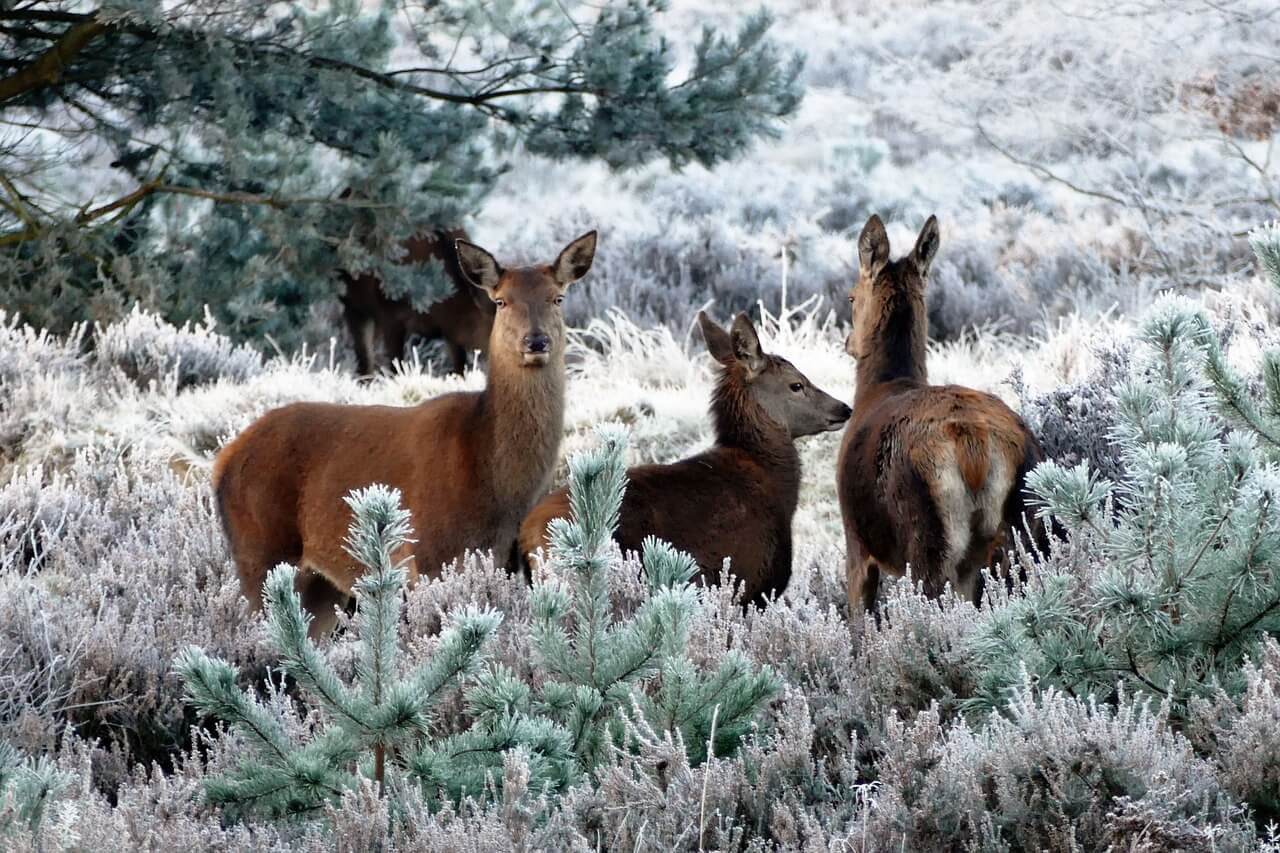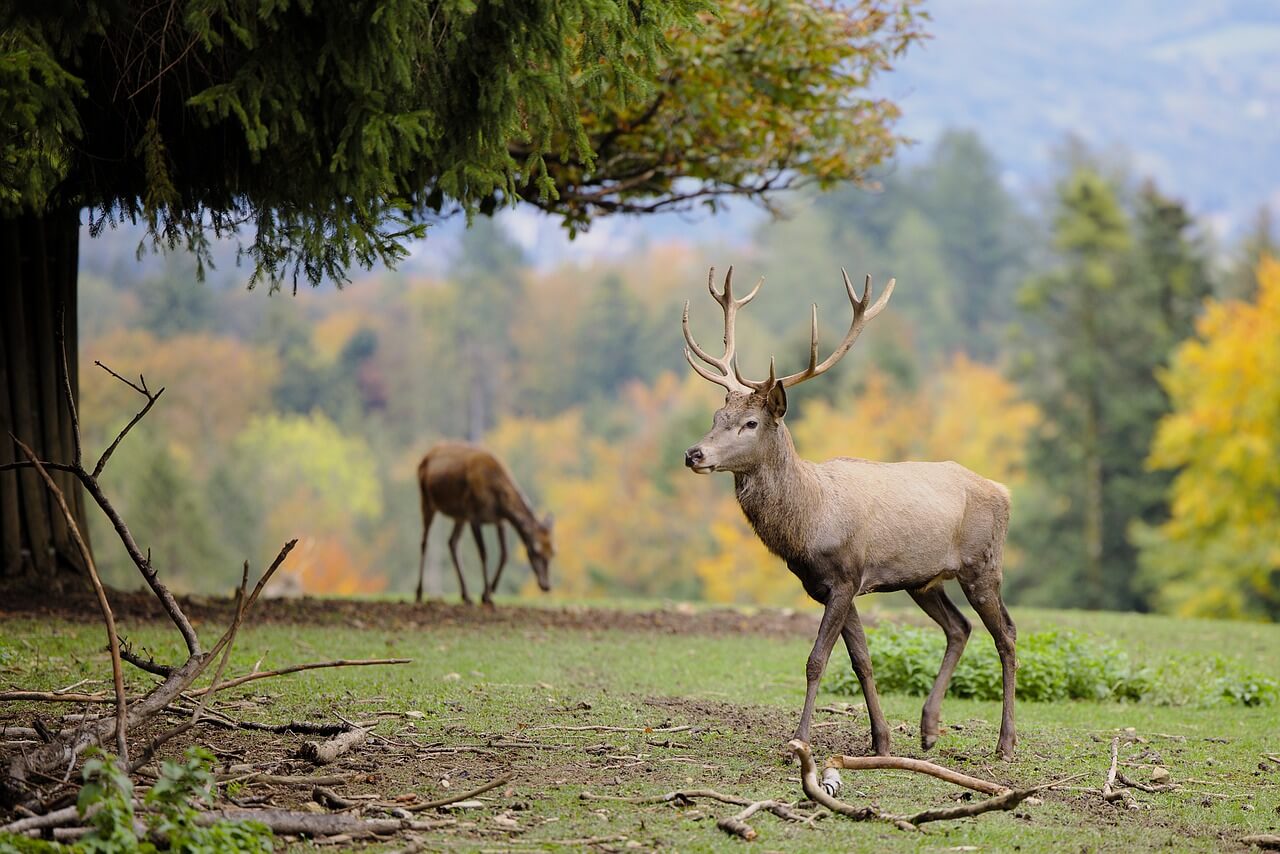Is It Legal to Feed Deer in the State of Maine
One of the benefits of sharing a neighborhood with deer is being able to see them browsing for food in your backyard. It can be tempting to put food out for them to make sure they keep coming back. Before you start feeding wild deer, make sure you read up on the potential risks, and learn how to feed responsibly.
What You'll Learn Today
- Is it Bad to Feed Wild Deer?
- 1. It can spread disease
- 2. It causes unnecessary competition
- 3. It can make them behave unnaturally
- 4. It contributes to overpopulation
- What Should You Not Feed Deer?
- What Can I Feed the Deer in My Backyard?
- Final Words
Is it Bad to Feed Wild Deer?

Unfortunately, there is no easy answer to this question. It depends on how and what you're feeding the deer and your geographic location.
In many cases, supplemental feeding does more harm than good for wild deer. When homeowners start leaving snacks out in their yard for deer, there can be several unintended consequences. For example:
1. It can spread disease
Leaving food out for deer could result in groups of deer gathering in your yard. When deer congregate in higher densities than usual, you create a higher risk of the deer spreading harmful diseases to each other.
Chronic Wasting Disease, for instance, is a contagious and fatal illness that spreads easily among deer in close proximity.
2. It causes unnecessary competition
Large groups of deer who are looking for an easy source of food are likely to compete over it due to their natural social hierarchy. The deer that come out on top are the stronger ones who don't need the extra food to begin with.
3. It can make them behave unnaturally
Although it can be rewarding to get wild deer to trust you by feeding them, it's bad for their safety. Deer are naturally scared of humans – as they should be.
When you take away the instinctual fear, deer might get too comfortable in residential areas. This increases the risk of deer-related car accidents, damage to landscapes, disruption of other wildlife habits, and even aggression towards humans.
4. It contributes to overpopulation
As harsh as it may seem, nature weeds out the weaker animals and controls the deer population on its own. When humans interfere by feeding them, more deer survive than their habitats can accommodate.
This video below is an example of a well-intentioned deer feeder who may not realize the risks.
What Should You Not Feed Deer?
Sadly, many wild deer are killed each year by well-intentioned humans. Many people assume that it's fine to give deer any leftover scraps they have on hand.
The truth is, although deer may eagerly snack on whatever you've provided, that doesn't mean that it's good for them. Deer are accustomed to certain types of food, and suddenly straying from that diet can do more harm than good.
For example, it's a common misconception that you can feed corn to deer. While deer can be found munching on leftovers in cornfields, it's not a major source of nutrition for them, and some don't eat it regularly.
Corn is a fermentable carbohydrate that is low in protein. If it's introduced too quickly into a deer's diet, it could result in death. Deer would also need to eat more than they are capable of eating to get an adequate amount of calories from corn.
Here are some other examples of foods to avoid when feeding deer:
- Hay
- Alfalfa
- Kitchen scraps
- Potatoes
- Lettuce
- Animal proteins
What Can I Feed the Deer in My Backyard?

If you're going to start feeding wild deer, it's important to try and replicate their normal diet. One of the safest ways to do this is by planting and maintaining trees and plants that attract deer.
Deer eat a lot of "woody browse", which includes twigs from oak and elm trees, buds, and leaves. You can also help them out by cutting down some branches for the deer in your yard.
There are ways to provide a feed mix for deer if you do it responsibly. It's important to pay attention to what you're feeding them, and where you feed them. Here are some general rules:
- Pay attention to the laws. Many states have regulations for feeding deer, including the type of feed, amount, and location.
- Feed away from the roads. It's best to provide food for deer in areas where they already gather, or close to it. Only feed them on your property if you're far enough away from plowed roads to lower the risk of car collisions.
- Scatter food in several locations. Whenever you feed the deer, make sure you distribute food in multiple locations so that they won't have to compete for it.
- Don't end a feeding program too soon. When you start feeding deer, don't stop until plants and trees start blooming again in the spring.
- Be careful with supplemental food. Foods like oats, acorns, and berries are okay once in a while, but the bulk of their diet should be woody browse. You can find deer food mix at your local feed store.
Final Words
The bottom line is if you're serious about helping your deer visitors stay healthy, do it responsibly. Take special care not to interfere with the deer's natural habits. And remember that once you start feeding them, they will depend on you to make it through the winter.
oxenhamwhateening.blogspot.com
Source: https://www.forestwildlife.org/what-can-you-feed-wild-deer/